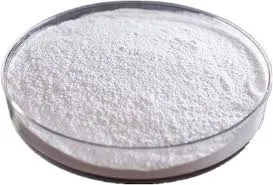
Dec . 24, 2024 15:23 Back to list
Find Affordable HPMC Options for Your Needs Today
The Growing Demand for HPMC Key Insights Into Its Purchasing Trends
Hydroxypropyl methylcellulose (HPMC) has emerged as a crucial component in various industries due to its unique properties and versatility. Commonly used as a thickening agent, binder, and film-former, HPMC finds applications in the pharmaceutical, construction, food, and cosmetic industries. As the demand for this biocompatible polymer continues to rise, understanding the factors driving its purchase is vital for stakeholders in these industries.
What is HPMC?
HPMC is a semi-synthetic polymer derived from cellulose, a natural polymer found in the cell walls of plants. Its chemical modification allows it to exhibit hydrophilic properties, making it soluble in water and enabling it to form stable gels or viscous solutions. Due to its non-toxic and non-ionic nature, HPMC is particularly favored in the pharmaceutical sector for drug formulation, providing sustained release and enhancing the therapeutic efficacy of various medications.
Factors Influencing the Purchase of HPMC
1. Diverse Applications The multifaceted applications of HPMC drive its demand across different sectors. In pharmaceuticals, it’s frequently used in tablet formulations, where it acts as a binder and disintegrating agent. In construction, HPMC is a key ingredient in cement-based products, improving workability and extending the open time of mortars. Additionally, the food industry utilizes it as a thickener, stabilizer, and emulsifier in various products.
2. Rise in End-User Industries The growth of sectors that heavily rely on HPMC has a direct impact on purchasing trends. For instance, the increasing construction activities worldwide, especially in developing economies, have led to an uptick in the demand for building materials that incorporate HPMC. Likewise, the pharmaceutical industry's ongoing innovations and the increasing production of generic drugs have further fueled the need for this polymer.
3. Consumer Preference for Natural Products As consumers become more health-conscious, there is a significant shift towards natural and biocompatible ingredients. HPMC, being plant-based, fits perfectly into this trend, making it an attractive option for manufacturers looking to appeal to health-oriented consumers. This growing awareness has resulted in an increase in products labeled as 'natural,' further stimulating the demand for HPMC.
4. Technological Advancements The drive towards innovation has led to the development of new grades of HPMC, each tailored for specific applications. For instance, the introduction of high-viscosity grades suitable for specialty applications significantly enhances the versatility of HPMC. Manufacturers continually innovate, which ensures that HPMC remains relevant in an ever-evolving market landscape.
The Market Dynamics
buy hpmc

The global HPMC market is characterized by healthy competition, with numerous manufacturers striving to capture market share. Key players invest heavily in research and development to introduce enhanced formulations and expand their product lines. Pricing fluctuations, driven by raw material availability and production costs, also play a crucial role in influencing purchasing decisions.
Buying HPMC Considerations
For businesses looking to purchase HPMC, several considerations come into play
- Quality and Purity Ensuring that the HPMC meets the required standards, especially for pharmaceutical applications, is imperative. Buyers should procure HPMC from reputable suppliers who provide certificates of analysis (COA).
- Supplier Reliability Establishing a relationship with reliable suppliers who can guarantee consistent supply and quality is vital. Companies should consider suppliers with a proven track record in the industry.
- Cost-Effectiveness While quality is paramount, the cost remains a significant factor in purchasing decisions. Buyers should analyze the total cost of ownership, including transportation and storage costs, to ensure that they are making cost-effective decisions.
- Regulatory Compliance In industries like pharmaceuticals and food, compliance with regulations such as FDA, WHO, or EU directives is crucial. Buyers should verify that the HPMC they purchase adheres to these standards.
Conclusion
HPMC is poised for continued growth as its applications expand across various industries. The factors influencing its demand, from consumer preferences to technological innovations, indicate a promising future for this versatile polymer. As businesses navigate the complex landscape of purchasing HPMC, they must consider factors such as quality, supplier reliability, cost, and regulatory compliance to ensure successful procurement strategies. Understanding these dynamics will not only help in making informed decisions but also in harnessing the full potential of HPMC in their respective industries.
-
Unlocking the Benefits of HPMC Products: A Gateway to Versatile Applications
NewsAug.07,2025
-
Unleashing the Potential of HPMC Ashland: A Comprehensive Look
NewsAug.07,2025
-
Tile Bonding Cellulose: The Key to Superior Adhesion and Durability
NewsAug.07,2025
-
Hydroxypropyl Methylcellulose Powder: The Versatile Component in Modern Pharmaceuticals
NewsAug.07,2025
-
Hydroxyethyl Cellulose: The Versatile Solution for Various Industries
NewsAug.07,2025
-
Hydroxyethyl Cellulose (HEC): The Versatile Polymer for Various Applications
NewsAug.07,2025







